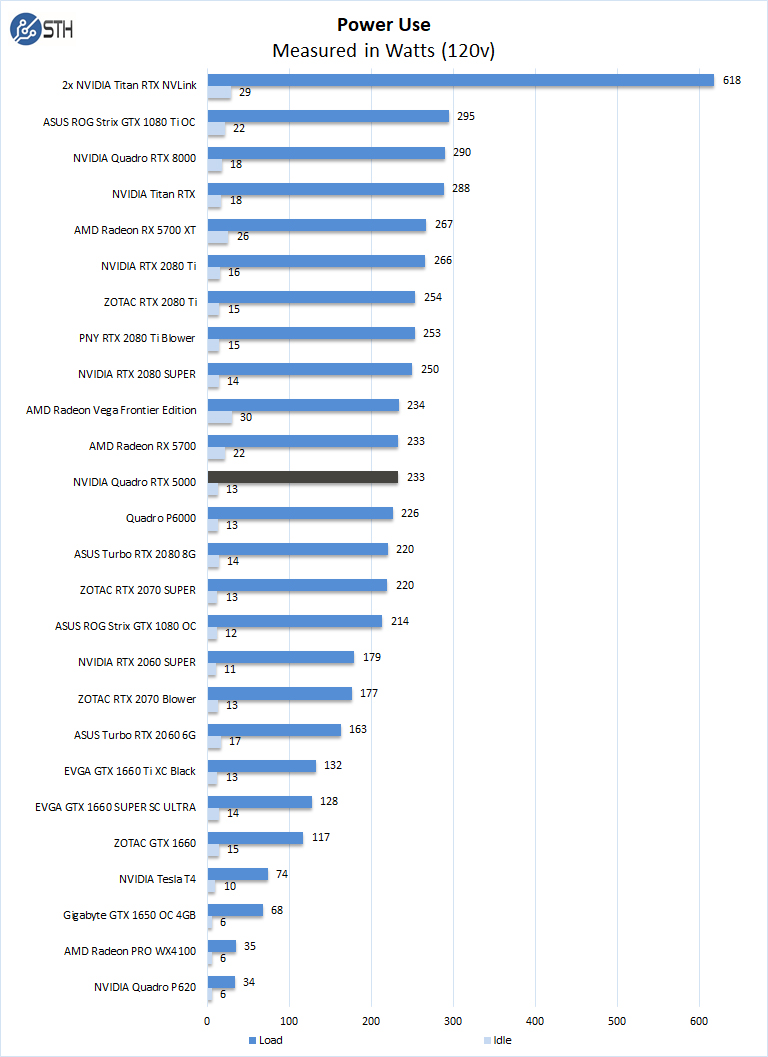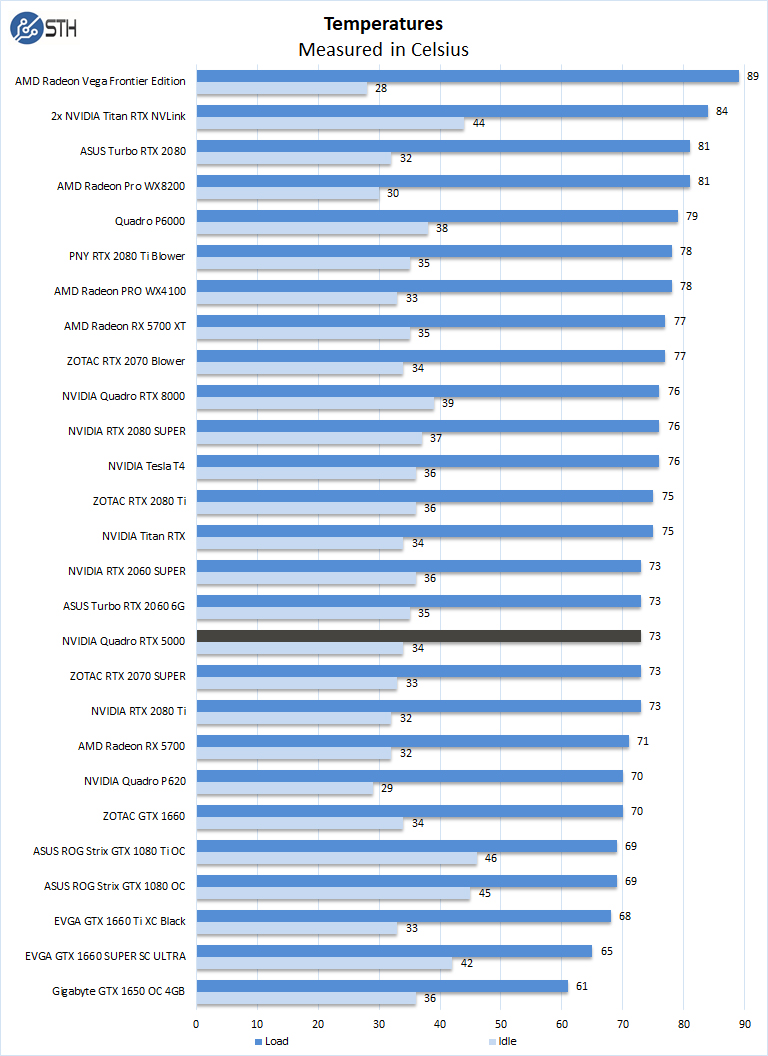NVIDIA Quadro RTX 5000 Power Consumption
For our power testing, we used AIDA64 to stress the NVIDIA Quadro RTX 5000, then HWiNFO, to monitor power use and temperatures.

After the stress test has ramped up the Quadro RTX 5000, we see it tops out at 233W under full load and 13W at idle. The Quadro RTX 5000 is in the class of the RTX 2080 GPU’s but runs with a lower power draw for an equal amount of performance.
Cooling Performance
A key reason that we started this series was to answer the cooling question. Blower-style coolers have different capabilities than some of the large dual and triple fan gaming cards.

Temperatures for the Quadro RTX 5000 ran at 73C under full loads and 34C at idle. Our tests show good temperatures for a GPU with a blower type cooler, and the Quadro RTX 5000 would do well in a server type installation or with multiple GPUs packed tightly in a workstation setup.
Final Words
With 16GB of memory, we can run deep learning and other workloads that lower-memory cards cannot. That memory is ECC which means that it can be used for important tasks that cannot have errors. While the NVIDIA Titan RTX, and even dual NVIDIA Titan RTX card can compete in much of the market with the Quadro RTX 5000, the ECC memory is a big differentiator. We saw workloads where the simple addition of more memory meant that we had more performance at a lower power consumption than we would with larger cards.
Beyond the hardware and performance, the Quadro line also has features such as certifications for professional applications which is important for expensive licensed software where support is a critical part of the offering. In many industries, not having features such as these certifications necessarily means a card is excluded from consideration.
The price of the Quadro RTX 5000 is currently can set one back about $2,000. At this price point, the RTX 5000 is slightly less than a Titan RTX, and less than half the cost of the Quadro RTX 8000. One could install two Quadro RTX 5000’s for less than a single Quadro RTX 8000, which can make a lot of sense for some. While the pricing is higher, we can also look to professional/ prosumer CPUs like the AMD Ryzen Threadripper 3990X that cost $4,000 and Xeons even more. Software run in this space is also relatively pricey because it is a critical element for creative and engineering workflows. There is a relatively large feature set here that has the Quadro RTX 5000 positioned well in the upper end of the segment.
After testing the Quadro RTX 5000, along with many other solutions, we found the NVIDIA Quadro RTX 5000 to be a perfect balance of performance, capabilities, power usage, and thermals. Many users find the workhorse of the NVIDIA RTX series to be the GeForce RTX 2080 and RTX 2080 Ti. Here, with the Quadro RTX 5000 series, we get something that is a lot more differentiated than if you just look at the number of compute units.




“Certified” most of the times means more expensive for a cheaper alternative. It’s the same chip as used in the Geforce cards and artificial bottlenecked when possible.
The AIDA64 results for double precision seem to indicate like many other cards outside of the V100 price segment that this is an AI and graphics card that is not good for HPC. It would be nice to include the Titan-V in the AIDA64 table to see 64-bit float difference.
Another interesting card, for developers and scientists who don’t have a US$ 13000 budget for a V100 are the Radeon VII cards from AMD which can run CUDA (mostly) with the HIP compiler.
Does AMD still make GPU’s?
They seem to lead the temperature chart here but not much else.
Missed a bit on page 2, should probably say Geforce RTX 2080 Super rather than Geforce RTX Super
@Jim:
Well yes, but not for dinky toys at the moment, they make them for supercomputers like the HPE-Cray/AMD with the El Capitan 2 Exaflop Supercomputer.
Hi William, you still haven’t got your hands on an mi50 or Radeon VII cards yet?